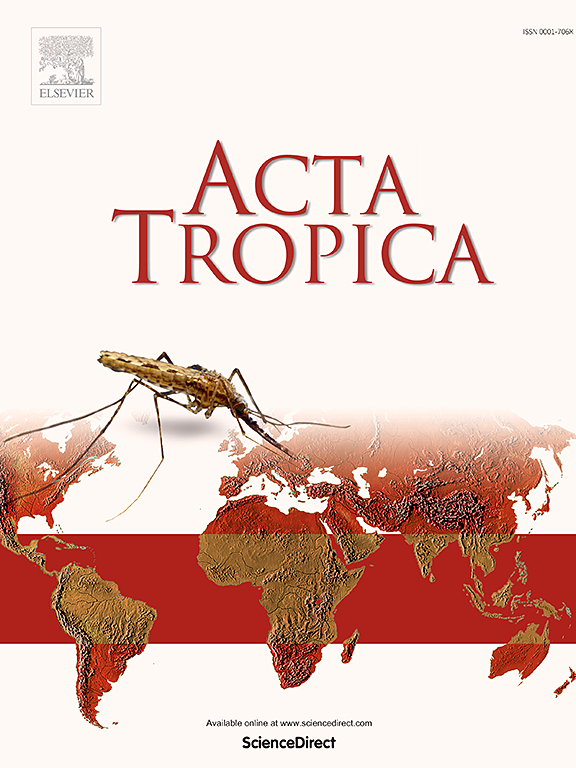Accuracy of diagnostic tests for feline sporotrichosis: A systematic review and meta-analysis
IF 2.1
3区 医学
Q2 PARASITOLOGY
引用次数: 0
Abstract
Background
Feline sporotrichosis is a subcutaneous infection caused by fungi of the Sporothrix genus, particularly concerning in endemic regions of South America, where cats are important vectors. Traditional diagnosis through fungal culture is time-consuming, which can delay the start of treatment.
Objective
Our goal was to synthesize the evidence on the accuracy of alternative diagnostic methods for feline sporotrichosis.
Methods
A systematic review was conducted following the Cochrane Collaboration recommendations and the PRISMA-DTA checklist (CRD42023456520). Searches for observational studies were performed in PubMed, Embase, and Web of Science. Using a random-effects model, bivariate meta-analysis was employed to estimate combined sensitivity, specificity, and diagnostic odds ratio (DOR) with 95 % confidence intervals. The results were presented in forest plots and Summary Receiver Operating Characteristic (SROC) curves; heterogeneity was assessed using Tau² and I² statistics (R-software).
Results
Eight studies, totaling 1,920 cats, evaluated five diagnostic methods. PCR tests had the highest accuracy (90 % sensitivity, 94 % specificity, area under the curve 0.950), while cytological methods demonstrated moderate diagnostic accuracy (89 %, 22 % and 0.879, respectively). The findings highlight the need for faster, more accurate, and cost-effective diagnostic alternatives, especially in resource-limited regions, and underscore the importance of advancing techniques to improve early detection and treatment of sporotrichosis.
求助全文
约1分钟内获得全文
求助全文
来源期刊

Acta tropica
医学-寄生虫学
CiteScore
5.40
自引率
11.10%
发文量
383
审稿时长
37 days
期刊介绍:
Acta Tropica, is an international journal on infectious diseases that covers public health sciences and biomedical research with particular emphasis on topics relevant to human and animal health in the tropics and the subtropics.
 求助内容:
求助内容: 应助结果提醒方式:
应助结果提醒方式:


